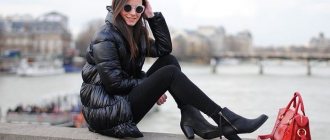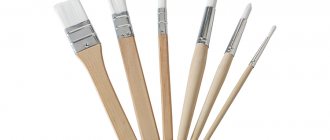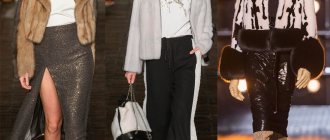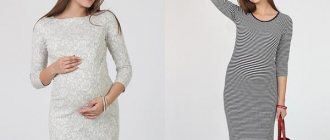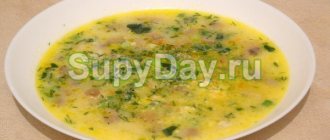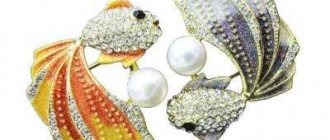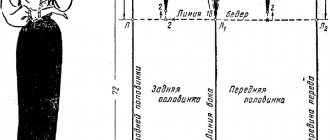Winter down jacket as a wardrobe element
Down jackets came into fashion in Russia in the 80s and 90s, “replacing” mouton and astrakhan fur coats. If at first bright, warm jackets were in short supply and were only available to notorious fashionistas, then in the mid-90s, Chinese down jackets filled the streets. Wearing a down jacket was “cheap and cheerful,” so it became commonplace. The colors are eye-catching, the styles are such that they will ruin any figure... Our happiness is that today the down jacket has returned to the wardrobe in a completely different quality!
A down jacket is a light and stylish winter jacket or coat that is perfect for urban fashionistas and fashionistas. A well-cut down jacket can be combined with accessories and create an incredibly stylish look. It fits perfectly:
- young mothers who walk with their children;
- car ladies and men who spend a lot of time in the car;
- as clothing for trips out of town and into nature.
In terms of comfort, a down jacket cannot even be closely compared with fur coats and sheepskin coats: it is light, it is convenient to move in it, it can be easily cleaned and even machine washed! A down jacket is a necessary element of the wardrobe of a modern active person.
How to choose a down jacket
“Down jackets” used to be used to refer exclusively to jackets filled with real bird down. Today such models are rare. Of course, they are in the lines of many manufacturers, but most down jackets today are made with synthetic fillers, which are not inferior in quality, or even superior to natural down. It is important to decide on your goals. If this is a thing for every day, which will have to replace a sheepskin coat or a fur coat, then you should prefer an elongated version, like a coat. This is true for both women and men. It is desirable that such a model at least cover the buttocks. If you need a down jacket for relaxation, sports, or trips out of town, you can choose a shortened version that can be combined with insulated trousers.
Fillers: types and properties
The “warmth” of a down jacket depends on what is under the lining.
Table: the most popular types of modern fillers
| Name | Manufacturing technology | Designation on the label | Advantages | Flaws |
| Feather | Natural down and feathers of birds:
| Down - "down" Feather - "down + feather" Intelligentdown - "down + synthetic filler". The percentage of down and feathers may be indicated. For cold winters, 80% down, + 20% feather is optimal . |
|
|
| Wool filler | Sheep's wool | wool Can be mixed with synthetic fillers. |
|
|
| Sintepon | Polyester fibers bonded with glue by heating or felting. | Polyester |
| It gets into clumps after several washes, so you need to choose a quilted product made from padding polyester. The smaller the stitch, the better. Does not remove moisture from the body (it is easy to sweat). |
| Improved varieties of padding polyester | ||||
| Holofiber | Polyester fibers, hollow inside. They are shaped like small springs. They are fastened with glue and pressing. | Hollowfiber/Polyester |
| Does not remove moisture outside. |
| Fibertek | Empty short polyester fibers inside. They have the shape of zigzags. Secured with silicone. | Fibertech/ Fibertek |
| There are no significant shortcomings. Fibertek is closer in properties to Thinsulate, but to achieve the same “warmth” Fibertek requires much more than Thinsulate. |
| Other materials | ||||
| Isosoft | The finest polyester fibers, very tightly twisted into balls. Bonded by heating. | Isosoft |
| Significantly more expensive than other synthetic insulation materials. |
| Thinsulate | Ultra-thin and light fibers in huge quantities. This number of fibers allows a lot of air to be retained in the material. | Tinsulate |
| The cost of a down jacket increases and can accumulate static electricity. Many people consider Thinsulate to be too “hot”. |
Leading clothing manufacturers also have their own patented synthetic fillers. As a rule, they have excellent thermal insulation properties. It’s great if the manufacturer sews a small bag with a sample of the filling to the back of the down jacket so that you can see it with your own eyes without waiting for something to come out through the seams.
So, a light, warm and “breathable” down jacket is Thinsulate and Isosoft, inexpensive and warm - padding polyester, holofiber. Adherents of everything natural choose wool and down fillings.
Other indicators of fillers
Usually, young mothers who choose clothes for children encounter these subtleties: in order for the child not to be hot or cold in winter, you need to deal not only with the filler itself, but also with its thickness, “gram”, layers, etc.
When choosing the very first winter overalls for my daughter, I read tons of articles about these nuances. There are indicators that you need to pay attention to, but there is no single system for assessing the warmth of fillers. Everything is determined by personal “frost resistance” and the climate in which we live.
Each filler has its own “temperature regime”.
Table: Amount of filler per temperature
| Filler | Off-season (from -5°С to +5°С) | Winter (from -5°С to -25°С) | Cold winter (from -25°C and below) |
| Feather | Not recommended | 80% down/20% feather | 90% down/10% feather |
| Thinsulate, isosoft | 70–80 g/m² | 180–200g/m² | 300 or more g/m² |
| Holofiber (Holofan, fibertek, thermofil - according to the same indicators) | 150g/m² | 200–300 g/m² | 300 or more g/m² |
| Sintepon | 250 g/m² | 300–350 g/m² | 350 and above g/m² |
| Sintepooh | 60–70 g/m² | 250 g/m² | 300 and above g/m² |
When choosing a product made from natural down, you should pay attention to the compression ratio or FP (Fill power). This is the “elasticity” of a material, showing how quickly it expands after being compressed. The higher the FP coefficient, the faster the down expands, which means there is more air in it, which allows it to retain heat. Higher FP means warmer jacket. The following standards have been adopted:
- FP 750 and more - special quality fluff;
- FP 500–750 - good quality fluff;
- FP 400–450 - medium quality down;
- FP below 400 is low quality fluff.
Many modern fillers (Isosoft, Thinsulate) are used to create “smart” clothing that not only retains heat, but also wicks away moisture. These are membrane sets, down jackets and jackets. At first glance, such things seem thin (it’s even scary to go outside in them in the cold), but they “work” perfectly! For membrane clothing, it is important to follow the “three layers” rule:
- Thermal underwear. It must be made of fine wool or synthetics. Cotton fabrics will absorb sweat, and the person will be wet, which means he will freeze.
- Lining made of artificial wool - fleece. Overalls are used for children; adults can wear a fleece jacket.
- Direct membrane jacket.
The “three layers” rule will allow a person to feel lightly dressed and not freeze. However, all three layers are usually worn if it is really cold outside. If the temperature is above -10°C, you can limit yourself to only thermal underwear. Since membrane clothing is so demanding on layers, it is important to understand: these are not jackets and suits for every day. Membrane items belong to the so-called outdoor clothing, created specifically for tourism and active recreation. Daily wearing of the membrane is only relevant for children who regularly and actively spend time outdoors.
Upper and lining material
The properties and appearance of a winter jacket are also influenced by other materials - the main fabric from which it is made and the lining. Most often, down jackets are made from polyester or nylon - completely synthetic fibers. These fabrics are easily dyed in any shade. They are durable, wear-resistant, and do not wrinkle. To the touch, the outer fabric of the down jacket should be quite dense, without streaks or folds (if they are not a design element).
Cheap and low-quality fabric usually reveals itself with an unpleasant shine, lack of thickness (sometimes the filler shows through or even pieces of feathers are visible).
Eco-leather down jackets are quite popular. This is a durable and elastic material that does not allow moisture to pass through. Such properties of eco-leather allow you to create products from it in a variety of styles - from figure-fitting to very loose, which look equally good. This material is very easy to care for! A down jacket made of eco-leather can be found with both down and synthetic fillers. They are often complemented with natural fur on the collar or sleeves, which gives the item a luxurious look. When choosing, it is important to pay attention to the fact that the upper material is called “eco leather” and not “artificial leather”. Eco-leather is covered with a layer of polyurethane, which gives it many useful properties. One of the most important is frost resistance. A product made from “artificial leather” will become stiff in the cold, but something made from eco-leather will not. And eco-leather, unlike artificial leather, is a more “breathable” material.
Membrane fabric is dense, slightly rough to the touch. There are different technologies for applying a membrane to fabric, but the goal is the same - to make the material remove moisture outside and retain heat inside. There are always icons on the label of quality membrane clothing. Firstly, the sign of the membrane itself - usually a piece of material with two arrows is depicted.
One arrow shows heat retention inside, the other shows moisture removal outside
Secondly, the name of the fabric (membrane covering) is often written on membrane winter jackets. It often ends in -TEX. For example, GORE-TEX, ReimaTec, etc. Thirdly, the waterproofness of the membrane is indicated (this fabric does not allow water to get inside) in millimeters. The higher this indicator, the more water pressure the material can withstand.
Membrane fabric is more difficult to care for; it will require the use of special detergents and does not accept the use of bleaches and stain removers. If the jacket is used for sports (snowboarding, alpine skiing, etc.), after washing it will need to be treated with impregnation.
But the membrane dries amazingly quickly: the children's overalls from one very well-known company, which my child had, were washed after a morning walk and were ready for use after a nap.
The lining fabric is in most contact with the body and is subject to friction. Therefore, it must be durable and pleasant to the touch. Natural fabrics are very good - satin, flannel, flannel, knitted cotton fabric, but they do not always withstand physical stress. Most often, winter jackets are hemmed with mixed fabrics that meet all the necessary requirements. When choosing, you should rely on your feelings. If the fabric looks strong enough, is pleasant to the touch, does not accumulate static electricity, does not slip and, of course, looks beautiful from the inside - this is a high-quality lining.
Attention to seams
Internal and external seams must be made carefully and well processed so that the filler does not come out through them. If pieces of it are visible in the seams already in the store, the item is not worth purchasing. Often the seams are reinforced with cotton tape. For those who are choosing a down jacket for extremely low temperatures, you can pay attention to the concept of a “warm” seam: a tape is laid underneath it from the inside, which protects against blowing. On the outside, such seams are smooth and have a minimum of folds.
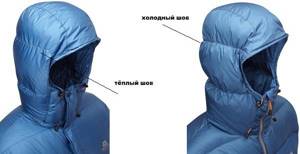
A down jacket with “warm” seams looks less prominent
Usually, manufacturers themselves indicate on the label if they made all or part of the seams using “warm” technology. This is the prerogative of expensive winter clothing brands.
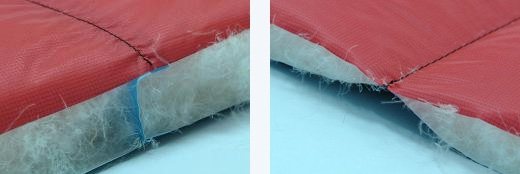
The “warm” seam can be felt with your hands: in it, the material of the top and lining are not directly sewn together
It is extremely rare, but there is a technology for gluing seams so as not to injure the fabric with a needle.
Additionally
Finally, we have put together for you, dear readers, several very useful life hacks or points that you should also pay attention to when choosing a down jacket:
- Essential parameters when choosing down jackets are the quality of seams and lining. They must be flawless. Sloppy seams or a crookedly sewn lining indicate a low-quality product;
- If the product tag says poly, cotton or wool, it is synthetic. Moreover, if you are assured that a down jacket consists of down or feathers, know that you are being deceived;
- If you are a car lady, then a monosyllabic down jacket will be enough for you. Double-layer, as a rule, is used for winter outdoor activities, and you will be hot in it;
- Let's look at the label again. If you see the inscription DIN EN 12934 there, it means that the down is of high quality, and it was processed, washed, disinfected and dried before use.
Based on these rules, you can easily choose a down jacket that will delight you with high quality and excellent appearance for a long time.
Which outerwear brand do you prefer?
How to choose the size
When trying on down jackets in a store, pay attention to the approach to its designation. Sizes can be Russian, European or international, in the form of letters. Usually, down jackets are bought in size - outerwear is cut taking into account the fact that it is worn over sweaters, dresses or jackets. However, you should definitely study the manufacturer’s sizing chart, since each of them may have its own nuances.
It is especially important to familiarize yourself with the size chart for those who order clothes online: it happens that a down jacket has a standard size across the chest, but may be too narrow at the hips.
The size chart can always be found on the manufacturer's website. Many companies include a size label on a paper label that is attached to the product. Good online stores must publish the sizes of each of the brands presented.
Tables with sizes of men's and women's outerwear
Anyone who goes to the store to choose a winter jacket needs to know their Russian size. From this parameter you can move on.
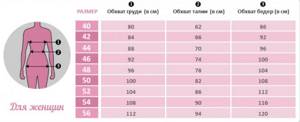
Standard sizes are designed for average height - 165 cm
Men need to take the same measurements as women.
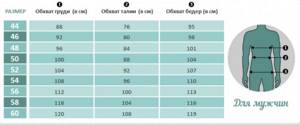
Men's sizes are usually designed for taller height and a smaller difference between the waist and hips
European sizes always differ by 6 on the smaller side. Therefore, when you see the number 40 on the label of a quite average-sized down jacket, don’t rush to put it aside - after all, it’s a Russian 46! It's even easier with letters:
- S-small (small);
- M-medium (medium);
- L- large (large).
The letter X stands for Extra, and can be added to either increase the size (XL) or decrease the size (XS).
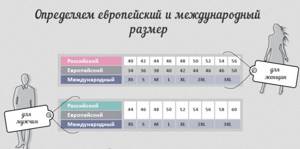
Important: men's sizes in Russia and Europe are the same
Sometimes you can see a cut designation on the label: “Slim” means a fitted fit, “Regular” means a regular fit, and “Relaxed” means a loose fit.
Types of cut
Modern models attract a wide choice - from sporty, classic down jackets to a bold oversized style. The loose fit and unrivaled comfort attract all connoisseurs of comfort. The down jacket-blanket has become a trend in recent seasons. Options of different lengths, with a hood, and a shawl collar allow almost every fashionista to choose the optimal model. The new product, thanks to its universal cut, firmly retains the interest of buyers. Elements of asymmetry add unusualness to the simplest down jackets. The line of the pocket, hem, clasp, and collar create an attractive silhouette. The deliberate carelessness of the voluminous item emphasizes the originality of the model.
Quality products are produced by manufacturers who specialize in developing clothing for cold weather. Our production allows us to create high-quality fashionable products for everyday wear. The combination of successful design and natural materials is typical for the products of the entire model range. A wide range of down jackets allows you to choose outerwear for both mild and severe winters.
Important Details
A winter coat with down or synthetic insulation will last longer if it is quilted. For down models this is a mandatory requirement! Without high-quality stitching, the fluff will quickly bunch up at the bottom and the jacket will end up “empty.”
Pay attention to the quality of the zipper - the best (generally recognized!) zippers are YKK brands. It is very good if the zipper is closed with an additional strip with buttons or buttons - this way the down jacket will be warmer, because any zipper is ventilated. It is good if the manufacturer hems a small corner of fabric on the upper edge of the zipper - it will not allow the skin on the chin to be pinched when fastening it.
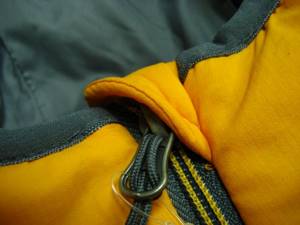
This detail is relevant not only on children's jackets
A very useful addition to any winter coat is the inner cuff. An elastic band is sewn into the sleeves from the inside to protect the hands from the wind. This detail is good on any down jacket, but it is especially practical on models with wide and short sleeves.
Useful little things: drawstrings and laces. High-quality drawstrings will help improve the fit of the down jacket to the body at the waist, in the neck area, and in some models even at the bottom. The drawstring, hemmed from the inside at the waist, significantly increases the warmth of the product. It will also help improve the fit of the product.
Oversized down jackets: yes or no?
Oversized is also a base. Suitable for all body types, because you simply can’t see anything underneath: whether you have a tummy or not, wide hips or broad shoulders, what size breasts you have. Therefore, if you like voluminous things, feel free to wear them. It is fashionable, beautiful, and warm.

Oversized down jackets: 1 - Army Yves Salomon, 2 - 12 Storeez, 3 - Ienki Ienki, 4 - Ruxara.
Down jacket care
Caring for a modern down jacket is a complete pleasure compared to caring for a fur coat, for example. However, this matter also has its own subtleties.
The main thing is to study the label on the product! Usually, items from high-quality brands can be washed delicately in a machine - this significantly relieves the owner’s workload. Maintain a temperature of 30–40 degrees. If there is a “do not wring” sign on the product, then wash it without spinning, and then lightly wring out the down jacket with your hands and let the water drain. Any winter jacket is a multi-layer product, so it is better to wash such items with liquid detergent. This will prevent powder residue from accumulating between layers and causing streaks. There are special detergents for membrane jackets and coats that will not clog the pores in the “smart” fabric. They are produced by a variety of manufacturers, so you can find both expensive, professional products (sold in sporting goods stores) and ordinary ones that any housewife can afford (they can be found in any supermarket among liquid laundry detergents). If you don’t have anything at hand, then the best option is to grate regular laundry soap and add these shavings to the powder compartment. It is better to squeeze out the membrane product manually.
A down jacket filled with down and feathers is more difficult to care for. If the product can be washed, then this must be done strictly according to the instructions (temperature, spin, etc.). It is worth purchasing special balls for washing down products.

The balls, being in the drum of the machine, constantly “hit” the down jacket, preventing the filler from clumping into clumps
The ideal option (especially if the down jacket is light or very expensive) is to have it dry cleaned. Specialists will help you clean the product in the most delicate way. Often for such things they use aqua-cleaning - a very delicate type of washing at low temperatures and little physical impact. If you decide to wash your down jacket at home, follow the instructions:
- Unhook the fur, cuffs, and other parts that can be removed from the down jacket.
- Remove everything from the pockets and zip them shut.
- Close all the locks and buttons, turn the down jacket inside out.
- Place the product in the drum. If you have laundry balls, be sure to include them. For one down jacket, 4–8 pieces are enough.
- Select programs: “delicate wash”, “fluff” mode, etc. Temperature 30 degrees, double rinse, no spin.
- Add liquid detergent to the powder compartment and start the machine.
- At the end of the washing cycle, immediately remove the down jacket, lightly remove the water from it and spread it on the floor, on the bedspread.
- When the down jacket dries, you can hang it on hangers to finish drying.
